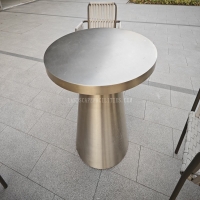Welcome to the website for landscape facilities products and knowledge.
What are the key differences between landscape tables designed for active vs. passive use?
When selecting landscape tables for outdoor spaces, understanding the distinctions between designs for active and passive use is crucial. Tables for active use prioritize durability, ergonomics, and functionality to accommodate dynamic activities like dining, working, or socializing. These tables often feature sturdy materials like metal or treated wood, with adjustable heights or modular designs to support movement.
In contrast, tables for passive use emphasize aesthetics and relaxation, commonly crafted from materials like teak or wicker with lower profiles for lounging. Their designs focus on visual harmony with the environment, often incorporating decorative elements. Active-use tables may include built-in features like cup holders or charging ports, while passive-use tables lean toward minimalist styles.
Ultimately, the choice depends on the intended purpose—active-use tables suit high-traffic areas, while passive-use tables enhance serene settings like gardens or patios.
Related search:

Recommendation
Outdoor Metal Table - Classic Outdoor Furniture, Stainless Steel Table, Durable and Reliable